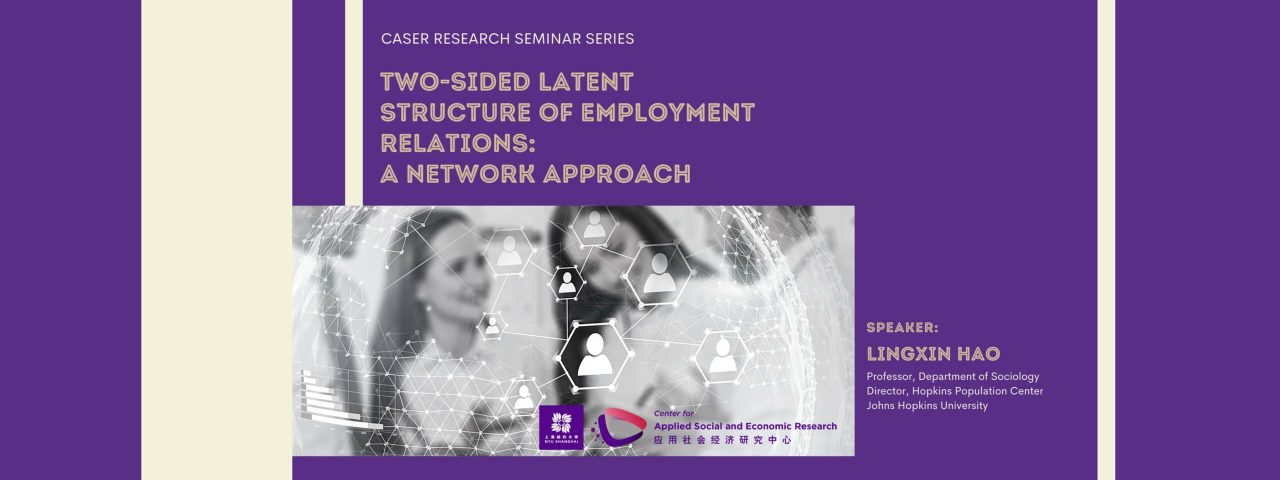Share:
Two-Sided Latent Structure of Employment Relations: A Network Approach

- Lingxin Hao, Johns Hopkins University
- 8:00-9:30 pm (GMT +8:00), Thursday, October 29, 2020
- Seminar hosted via Zoom
Abstract
In the employment literature, the relational aspect, i.e., the sorting and matching of workers and jobs, has been examined with observed covariates, and sometimes unobserved individual workers or jobs fixed effects. A main limitation of this line of work is that it ignores the latent positions of workers and jobs in employment relations. In this paper, we conceptualize employment relations as arising from the latent classes on the worker and job sides, respectively. We apply a recent latent position cluster model of social networks, specifically the generalized random dot product graph (GRDPG) that is model-based, inferential, and scalable. GRDPG estimates and clusters a small number of interpretable two-sided latent classes of workers and jobs, which are not the same as the numerous, isolated, individual workers or jobs fixed effects. These two-sided latent classes help correct biases from the mis-specified equations for labor market outcomes such as wages that leave out the latent structure of employment relations. This graph-theoretic principled, fast-computational framework permits our analysis of a large network of American employment relations between 9,323 individuals and their jobs in 3,093 occupation-industry categories during the years 2013-2016, drawn from a nationally representative survey. Our innovative substantive model and fast computation have the ability to empower researchers with a network-oriented toolkit readily applicable to phenomena driven by social relations between individuals and organizations/institutions, a fundamental premise of sociology.
Joint work with Angelo Mele, Joshua Cape, Avanti Athreya, Cong Mu, Carey E. Priebe. This research is supported by the National Science Foundation under grants SES-1951005 and DMS-1902755.
Short Biography
Dr. Lingxin Hao is Professor of Sociology, Director of Hopkins Population Center, Johns Hopkins University. Her areas of specialty include social inequality and mobility, sociology of education, migration, family and public policy, and quantitative methodology. Dr. Hao has been the principle investigator for several multi-year projects supported by NIH and NSF. Her publications appear in American Journal of Sociology, Demography, Social Forces, Child Development, Sociology of Education, International Migration Review, Journal of Marriage and Family, and others. Her book Color Lines, Country Lines: Race, Immigration, and Wealth Stratification examines immigration’s impact on racial wealth gaps in the U.S. Dr. Hao has published quantitative and computational methodological work in Sociological Methodology, Sociological Methods and Research, Physica A, and Sage quantitative series Quantile Regression and Assessing Inequality. Dr. Hao earned her Ph.D. in sociology from the University of Chicago in 1990.

